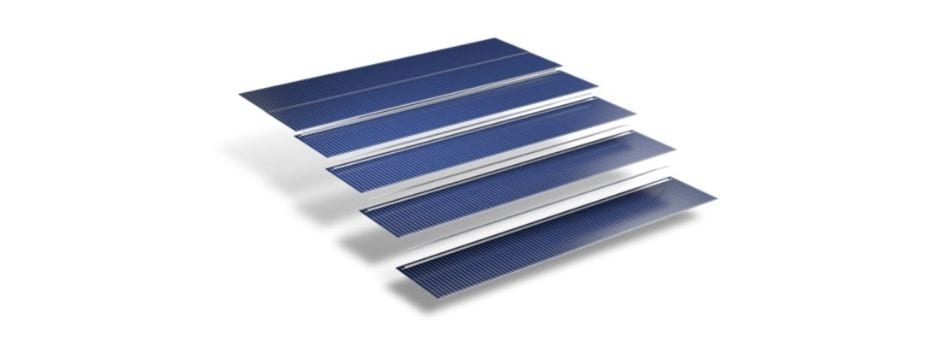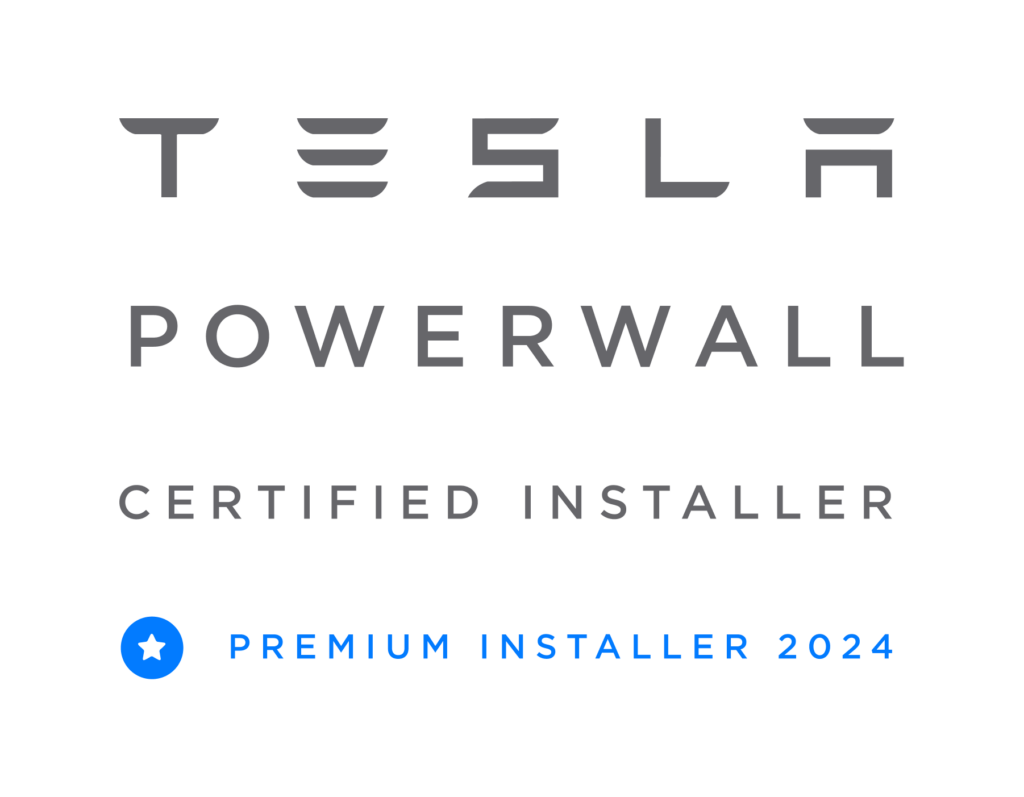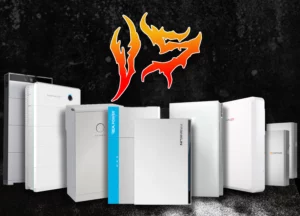Types of Solar Panels:
Monocrystalline vs Polycrystalline
Look, we all know that solar panels are going to slash our energy bills. We know that they help the environment and offer a great return on investment.
Now we’re at the point of wanting to know what TYPE of solar panels are going to be best suited for your home… Look before I go through all of this I do want to make an important statement at the start to make things clear.
Types of solar panels have a very small difference in them, and the type of a panel should not be a priority buying factor. Similar to solar panel efficiency, it’s not the most important thing when it comes to buying solar.
So, in order to make the most out of the solar panel system you plan to install, you have to keep in mind that not all solar panels are built the same. This, in turn, poses the question of which type of solar panel should you opt for? Do you go for monocrystalline or polycrystalline panels?
In this in-depth article, we cover everything you need to know about the types of solar panels, from the construction, performance, and cost of each type, to their strengths and weaknesses.
I’m going to run through the difference in these solar panel types however you can decide which one is best for you. Like I said, personally there isn’t much in them.
If you’re still in research mode about solar and unsure where to start, read my guide on how to buy the best solar panels for your home here. If you’re thinking should I install solar now or wait, then time is money!
Ok, let’s get down to brass tacks, shall we?
Table Of Contents

Is It All About Monocrystalline Solar Panels?
We’re going to kick things off by talking about monocrystalline solar panels, seeing as they’re the most popular and most utilised, especially when it comes to rooftop installations.
The very first thing that sets monocrystalline solar panels apart from other types of solar panels is their aesthetics. They’re composed of flat, black-colored, single cells that are visually appealing, which makes this type of solar panel quite popular among homeowners.
Another reason why monocrystalline solar panels are so popular is that they’re highly efficient at harnessing solar energy. This is why the likes of SunPower and Longi are now using them.
How can you tell a monocrystalline panel apart from a polycrystalline panel?
All you have to do is look at the silicon wafers. If they’re shaped like squares with the corners cut off, you’re looking at a monocrystalline panel. Per contra, the wafers on a polycrystalline panel have their corners intact.
How monocrystalline solar panels are manufactured...
Monocrystalline solar panels, as the name suggests, are built from wafers made of a single silicon crystal. Each singular silicon crystal is made with the aid of the Czochralski method.
The Czochralski method entails placing a “seed” crystal into pure molten silicon at a high temperature. Thereafter, the seed is drawn up, and the pure silicon is formed around it, creating a single large crystal known as the ingot. From there, the ingot is sliced into thin portions (wafers) that make up the solar cells.
Monocrystalline solar panels typically have 60 or 72 solar cells. The number of solar cells a monocrystalline panel needs generally boils down to the size of the panel. Monocrystalline solar panels that are intended for residential use are typically 60-cell models.

How efficient are monocrystalline panels?
When it comes to efficiency, monocrystalline panels are surely the victor in the face-off against their polycrystalline counterparts, as their efficiency ranges from 17% to 22%. Not only are they more efficient than all other types of solar panels, but they also have the highest power capacity.
Jinko have just come out with a top panel, the Tiger N Type solar panel (you can see my tiger vs cheetah comparison here) and this is made from mono technology. It’s sitting high around 21% efficiency.
What makes monocrystalline solar panels so efficient, you’re probably wondering? Quite simply, their construction. See, monocrystalline panels are made out of a single silicon crystal, which allows the electronics to flow easily, and, in turn, boosts the panel’s efficiency.
Thanks to their high efficiency, monocrystalline solar panels tend to take up less space than other types of solar panels. If you have a monocrystalline setup with a certain power capacity, and another polycrystalline setup with the same capacity, you’ll notice that the monocrystalline setup is notably smaller in scale.
That being said, if you’re someone looking to install a solar panel system and you have limited roof space, a monocrystalline setup will be your best bet considering it will produce a great deal of power without taking up too much space.
Are monocrystalline solar cells affordable?
Seeing as they’re the most efficient and have the highest power ratings, monocrystalline solar panels are typically a little more expensive than their polycrystalline counterparts. Not to mention that it’s harder to produce a mono panel than it is a poly panel, so of course that factor comes in as well.
When you research some of the most popular solar panels available for sale, you’ll notice that the more premium ones are all monocrystalline. Examples include LG NeON and SunPower panels. However, these days, Longi is doing this and Jinko as well..
The market is changing. These solar companies are starting to make the market more and more affordable every year. It’s fantastic to see. The industry is booming with quality products for an affordable price! Who would have thought? 🤔
So honestly, yes monocrystalline are becoming more and more affordable every year. If you’re looking for quality though then its best to pay the higher price. Just make sure you don’t get a bad solar installation…
It goes back to that old saying… you get what you pay for.
Or Do Polycrystalline Solar Panels Take The Edge?
Polycrystalline (multicrystalline) solar panels are perfect for those looking to implement a solar energy setup without breaking the bank. As mentioned previously, they’re just a smaller amount cheaper than mono cells, but honestly there’s not much in it.
In terms of efficiency, polycrystalline panels just fall short compared to monocrystalline panels due to their manufacturing process, which we’ll cover shortly. Again, there isn’t much in this at all.
Also, they’re not as aesthetically pleasing as monocrystalline solar panels, seeing as their blue colour and the lack of white spaces (due to the corners not being cut off) can be a bit displeasing for some…. They’re going on the roof and not exactly going to be looked at every day but it might be something to consider.
So, exactly how are monocrystalline solar panels manufactured?
The manufacturing process for polycrystalline solar panels shares a lot in common with that for monocrystalline panels in the sense that it entails a seed crystal being dipped into molten pure silicon.
The difference, however, is that the seed crystal isn’t pulled out of the silicon vat. Instead, it’s left in there until the whole vat cools down, which, in turn, allows for a multitude of crystals to form. This multitude of crystals is what gives polycrystalline panels their blue aesthetics.
Polycrystalline panels, like their monocrystalline counterparts, are featured in 60-cell and 72-cell models. Both variants are suitable for residential use, but the difference in size and capacity will be a deciding factor for people with limited space.

Are polycrstalline cells more or less efficient than mono solar cells?
Unlike monocrystalline solar panels, the construction of polycrystalline panels slightly lowers (just a little bit) their efficiency, seeing as the presence of several silicon crystals makes for a harder flow of electrons. That said, polycrystalline solar panels tend to have efficiency rates that range from 16% to 18-19%.
However, homeowners… PLEASE do not let solar panel efficiency dictate whether you buy a panel or not. I’ve written a complete guide on why solar panel efficiency doesn’t matter as much as you think here.
As of late, several advancements and new technologies were introduced in the industry of solar panels, which have helped boost the efficiency of premium polycrystalline panels to be close to that of mono panels.
In earlier years, polycrystalline panels that featured 60 cells had a power rating of 240 watts. Nowadays, you can find polycrystalline solar panels with power ratings greater than 300 watts! Now that’s changing quicker than you can say solar! 😆
Polycrystalline solar panels are slightly more affordable than mono cells...
As we already established, polycrystalline solar panels are cheaper than their monocrystalline counterparts, but not by very much. Like I mentioned before, mono cells are becoming more and more affordable.
Big brands like Jinko and Longi are leading the way… Even Sunpower are becoming more affordable
Between the years 2012 and 2016, polycrystalline panels were notably cheaper than their counterparts, which is why they were more popular among homeowners at the time. Nowadays, monocrystalline panels are catching up fast…
Other Types of Solar Panels to Consider
Monocrystalline and polycrystalline solar panels may be the most popular and most suitable for residential use, but they’re not the only types available; thin film solar panels and solar roof shingles are also available. so, let’s briefly touch on each type…
Thin Film Solar Panels
Thin film solar panels are relatively new compared to monocrystalline and polycrystalline panels, and they’re not all that popular among homeowners. They are, however, growing in popularity and may eventually have a larger market share.
Thin film solar panels are built from semiconductor materials like amorphous silicon, cadmium telluride, and copper indium gallium selenide, where the material is basically rolled out on a given surface.
In terms of efficiency, thin film solar panels are notably less efficient than crystalline solar panels. Their efficiency range is between 10% and 13%. They also require a great deal of space and tend to lack in terms of durability, which is why they come with comparatively short warranties.
On the bright side, thin film solar panels are super affordable and are much more flexible than their crystalline counterparts. Moreover, they’re pretty aesthetically appealing compared to polycrystalline panels, and they’re more lightweight.

Shingled Solar Cells
Solar roof shingles are the latest introduction in the world of solar panels. They combine a range of strengths. Essentially they are overlapping solar cells and maximise a higher performance.
Another benefit that shingled solar cells offer is durability. They also pack a good amount of power and when combined with poly or mono you can get a seriously good solar panel.

What Type of Solar Panel Is Best for My Setup?
Honestly, I really want to stress that there isn’t much difference between the two.
Admittedly, poly is going to be your more cost effective solar solution here. So, if you’re on a tight budget then it going to be best for you.
If you do have the money then of course mono cells are going to be a winner for you. Usually with these panels comes a longer warranty as well.
I wouldn’t spend too much time focusing on this. Both panels are going to be great for your home and if you choose a reputable solar brand with a good warranty then you will be fine!
Just make sure that you choose the right installer. A bad solar installation can make you system fail in under 2 years… That’s more worrying… 😕
Final Thoughts
The many benefits of harnessing solar energy are enough to justify the hassle of getting your very own setup. From vast availability and reduced bills to minimal maintenance, solar panels are nothing but fruitful.
I’d love to hear your feedback. Which type of solar panel do you prefer? Mono or poly?
Leave me a comment and share your thoughts below. 😁
Share With Your Friends!
Written By:
Luke Cove
Managing Director
Lightning Solar & Electrical











